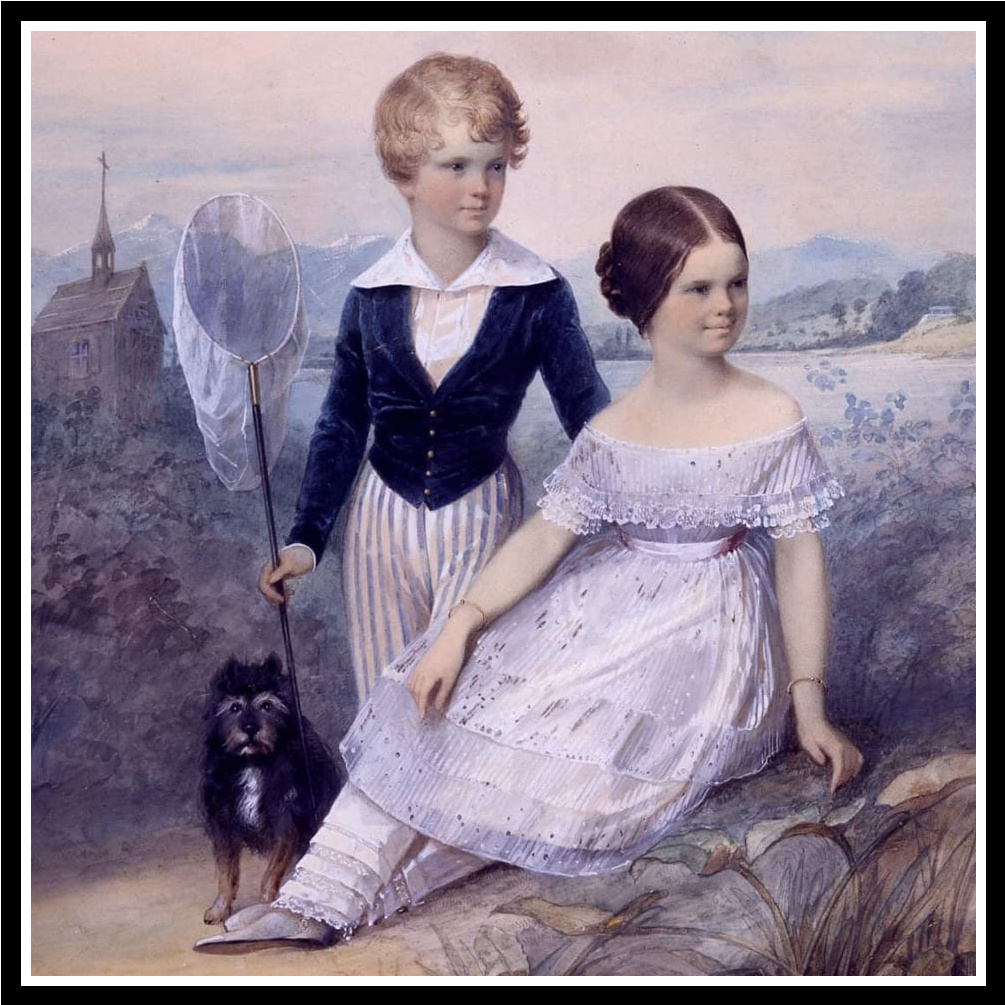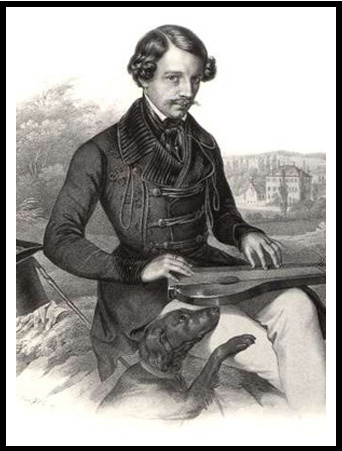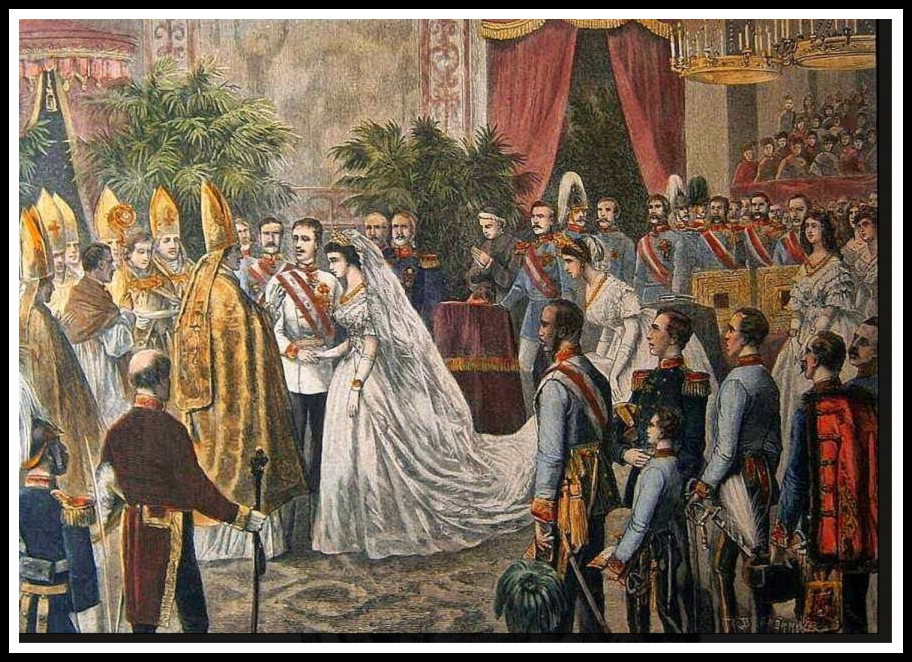
Sisi as a newlywed circa 1855
Empress Sisi’s story often reads like a fairytale…usually because a lot of the coverage of her life is fiction. The basics do parallel those tales: a vivacious, beautiful young woman is chosen from all the lands as the love of the Austrian emperor. As a beloved Empress, she adds fresh energy to Viennese court while riding horses, maintaining her youthful energy, being a fashion icon, and raising a family.
But the reality behind that lovely facade is a little darker, a little sadder, and did not end in a “happily ever after.”

Sisi at 11 with her brother, Karl Theodor. Most of the kids had cute nicknames, this is Gackl.
Elisabeth Amalie Eugenia in Bavaria was born on December 24, 1837, in Munich Bavaria to Duke Maximillian Joseph in Bavaria and Princess Ludovika of Bavaria. (That’s not a typo, because of their family lineage Papa was an “in” and Mama was an “of.”) The family dropped the name “Elisabeth” in favor of her nickname, “Sisi,” and it would stick for the rest of her life (creepy voice: and beyond.)

Helene and Sisi circa 1854

Papa Max and his zither
Sisi had a carefree childhood with an eccentric father and a prim and proper mother until her sister, Helene, was about to be pawned off in matrimony to the Emperor of Austria, Franz Joseph. But when Franz Joseph saw 15-year-old Sisi, he fell head over royal heels for her. Swapo chango! Childhood over! Sisi married her cousin Franz Joseph and, at 16, became the Empress of Austria.

Sisi and Franz Joseph’s marriage.
Every fairytale needs a villain and, as much as we dislike labeling strong, politically powerful, smart women as the villain, Sisi’s was her mother-in-law/Aunt Archduchess Sophie of Austria. Franz Joseph ruled because his mother, Sophie, orchestrated a behind-the-scenes campaign to get him there and she wasn’t about to cede any power to a teenager. Sophie made sure Sisi knew her place in court and that was BEHIND Aunt Sophie. When Sisi gave birth to her first child a year after marriage, Aunt Sophie named the baby after herself, bullied her way into having control of the baby, and kept Sisi as far away from the nursery as possible.
Sisi had her next child the following year and–no shock– Aunt Sophie pulled the same moves this time naming the baby Gisela (which is probably not pronounced the way you just read it.) Sisi was frustrated and angry; she didn’t care for the spotlight she was in and felt as if she had no control over her life and her children…mostly because she didn’t.
Part of her job as Empress was to travel on diplomatic missions with the Emperor. On these, away from Aunt Sophie, Sisi shined. She was beautiful, yes, but she also truly loved to talk to people not just the nobility but common people, too. After a particularly successful trip to Italy, Sisi returned to Vienna to find a pamphlet left in her rooms with a very clear message: You are replaceable until you give birth to a son.
Will Sisi step into her power as Empress?
Will she become known for anything other than her beauty?
Will she give birth to a son and tell her mother-in-law, “Game, set, match”?
Will we ever stop comparing her life to Marie Antoinette and Princess Diana?
All of that, and a whole lot more including books and media recommendations, will be in Part Two.
Break music: Mendelssohn’s Wedding March by Daniel Bautista, and The Argument by Aaron Sparks
End music: Checkmate by TS Hartley


